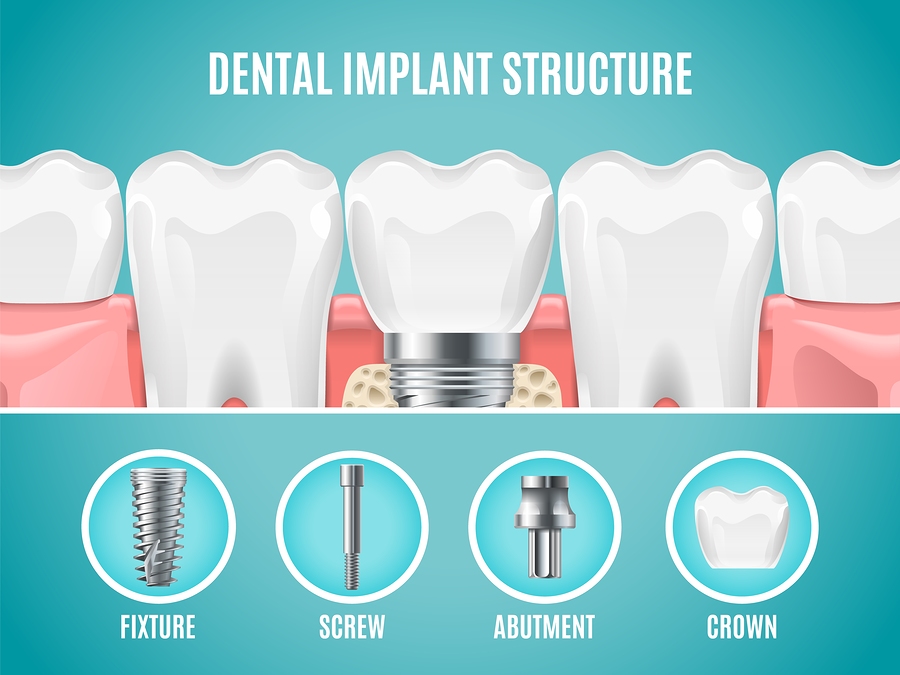Things about Dental Sense
Things about Dental Sense
Blog Article
All About Dental Sense
Table of ContentsSome Known Facts About Dental Sense.Excitement About Dental SenseRumored Buzz on Dental Sense4 Easy Facts About Dental Sense Shown
are clinical devices surgically dental implanted right into the jaw to restore a person's ability to eat or their appearance. They supply support for synthetic (fake) teeth, such as crowns, bridges, or dentures. When a tooth is lost due to injury or illness, a person can experience issues such as fast bone loss, malfunctioning speech, or modifications to eating patterns that result in discomfort.Oral dental implant systems are composed of a dental implant body and dental implant joint and might additionally include an abutment fixation screw. Kids dental. The dental implant body is surgically put in the jawbone instead of the tooth's root. The dental implant abutment is usually attached to the dental implant body by the abutment fixation screw and extends through periodontals into the mouth to sustain the attached man-made teeth
(https://linktr.ee/dentalsense1)Framework of The Oral Implant System selecting dental implants, talk with your dental service provider concerning the possible advantages and risks, and whether you are a prospect for the treatment. Points to think about: Your overall health and wellness is a vital consider establishing whether you are a good candidate for oral implants, how much time it will certainly require to heal, and how much time the implant might remain in area.
Smoking might impact the healing process and decrease the long-term success of the dental implant. The recovery process for the implant body might take numerous months or longer, during which time you normally have a temporary joint instead of the tooth. the dental implant treatment: Thoroughly comply with the oral health instructions offered to you by your oral supplier.
Some Of Dental Sense
Implant failing can result in the need for one more medical procedure to fix or change the dental implant system. Restores the capacity to eat Restores aesthetic look Helps keep the jawbone from shrinking as a result of bone loss Maintains the health and wellness of the surrounding bone and gum tissues Aids maintain adjacent (neighboring) teeth stable Improves lifestyle Damage to bordering natural teeth during dental implant positioning Injury to the surrounding tissues throughout surgery, such as sinus opening Injury during surgical treatment (as an example, fracture of bordering jawbone) Inadequate feature, such as really feeling like the teeth do not bite together typically A sensation that the tooth hangs or turning in position resulting from a joint screw loosening Implant body failing (looseness of the dental implant body) due to systemic infection, which may be much more most likely in patients with unchecked diabetes because of regional infection in bone and gum tissues sustaining the dental implant body due to postponed healing, which might be much more likely in clients that smoke Problem cleaning up the periodontals around the implant, resulting in inadequate dental health Unattended periodontal illness Post-surgical numbness because of nerve impingement or damages Constantly inform healthcare providers and imaging service technicians that you have oral implants prior to any magnetic resonance imaging (MRI) or x-ray treatments.
FDA is not aware of any type of unfavorable occasions reported for MRI or x-ray treatments with oral implants. Oral implants systems are commonly constructed from materials that adhere to international agreement standards of the International Company for Standardization (ISO) or ASTM International. These standards have information of what makes a safe material.

An oral implant is a framework that replaces a missing tooth. With screw-like devices, the surgeon inserts an implant right into the jawbone, and it works as an anchor for a man-made tooth, called a crown. A tool called an abutment connects the man-made tooth to the dental implant. The crown is tailor-made to fit the person's mouth and match the color of their teeth.
Dental Sense - The Facts
Some people are not qualified for oral implant surgical procedure. It is for oral doctors to operate individuals with: intense illnessuncontrollable metabolic diseasebone or soft tissue condition or infectionIf these concerns are settled, an individual can have the surgical treatment. In, oral specialists avoid operating on individuals with: If individuals with any of the above go through oral implant surgery, there is a higher threat of the implant stopping working.

Oral dental implant surgical treatment is a customized process. It's not the exact same for everybody. But the complying with gives a basic introduction of what you can anticipate your dental expert, dental surgeon, periodontist or prosthodontist to do: Position the dental implant surgically. Give you time to heal. Affix the post and last crown, bridge or denture.
Next off, your doctor will meticulously position the dental check that implant right into your jaw. If your implant is near the front of your mouth, your dentist will make a momentary tooth for you to use until you heal.
Facts About Dental Sense Revealed
Your company can tell you what to anticipate in your circumstance. Throughout the healing phase, your jawbone must fuse to the oral implant. This procedure, called osseointegration, is essential for stability and long-lasting success. This process can take anywhere from three to 9 months. In many cases, it might take longer.
Once your dental implant heals, your dental practitioner can affix the joint (tiny port post) and your final repair (crown, bridge or denture). This typically takes concerning one hour to complete and might require a second minor surgical treatment. You should not really feel any discomfort throughout your dental implant procedure because your supplier will use medication to numb your gum tissues.
Report this page